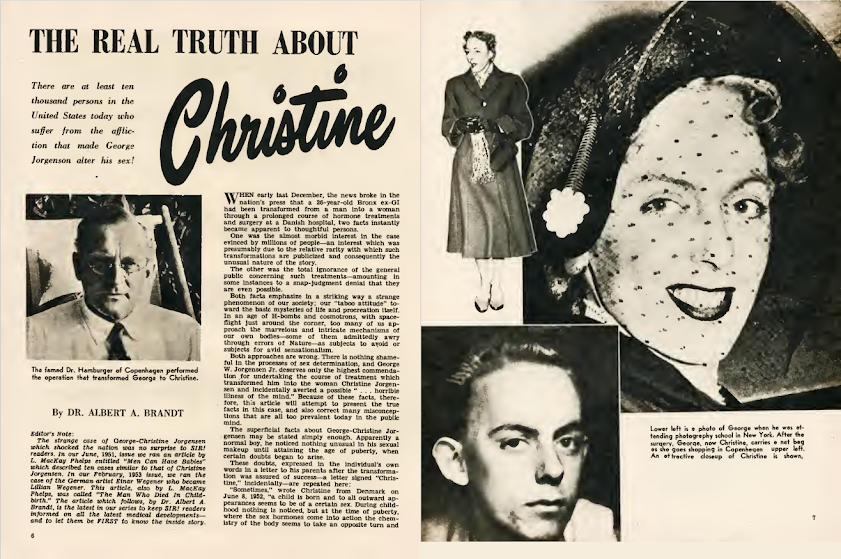 |
| "Not half man-half woman, but nevertheless, man and woman in the same body." |
It must have been shocking to the so-called "normal" people of the Truman-Eisenhower era when the headlines announced that, in mere months, a man named George Jorgensen was about to become a woman named Christine Jorgensen. While far from the first to undergo sex reassignment surgery, Christine was the first to dominate the headlines. Her successful reassignment was confirmed in the papers in early December 1952. By February of 1953, Christine made her heralded return to the states.
In the interim, a fledgling filmmaker named Edward D Wood Jr had shot his first feature, Glen or Glenda, partially inspired by the Jorgensen case. Although the project was intended as quickie exploitation, Ed would imbue it with his own personal travails regarding sexual identity. While the film would wind up as a cult favorite, Christine became a pop culture icon and fixture of newspaper and magazine articles. To some extent, she remains a household name three decades after her death.
I've shared details of Christine's fame previously, including some of those aforementioned articles. This week, I invite you to have a look at another article, deriving from that cataclysmic moment in 1953 when Christine Jorgensen took the world by storm. Sir! claimed to be a "magazine for males." It devoted the cover of its May 1953 issue (vol. 1, no. 8) to Christine. Like other magazines of the era aimed squarely at the average joe, Sir! featured a stew of the weird and the exotic, including plenty of sex and violence. One article warns that water is actually bad for you, while another details the sex lives of eunuchs. There's a pinup photo feature about the all-but-forgotten Linda Lombard, plus a clutch of pulp fiction short stories. An article called "The Effeminate Killers" even asks this daunting question: "Are bullfighters homosexual?" It's a dizzying array of overheated content.
Amid all this is "The Real Truth About Christine," credited to Dr. Albert A. Brandt. Here is the article in its entirety. You may have to click on these images to see them at a larger size.
 |
| Pages 6 and 7. |
 |
| Pages 8 and 9. |
 |
| Pages 64 and 66. |
You can check out the entire May 1953 issue of Sir! here.









